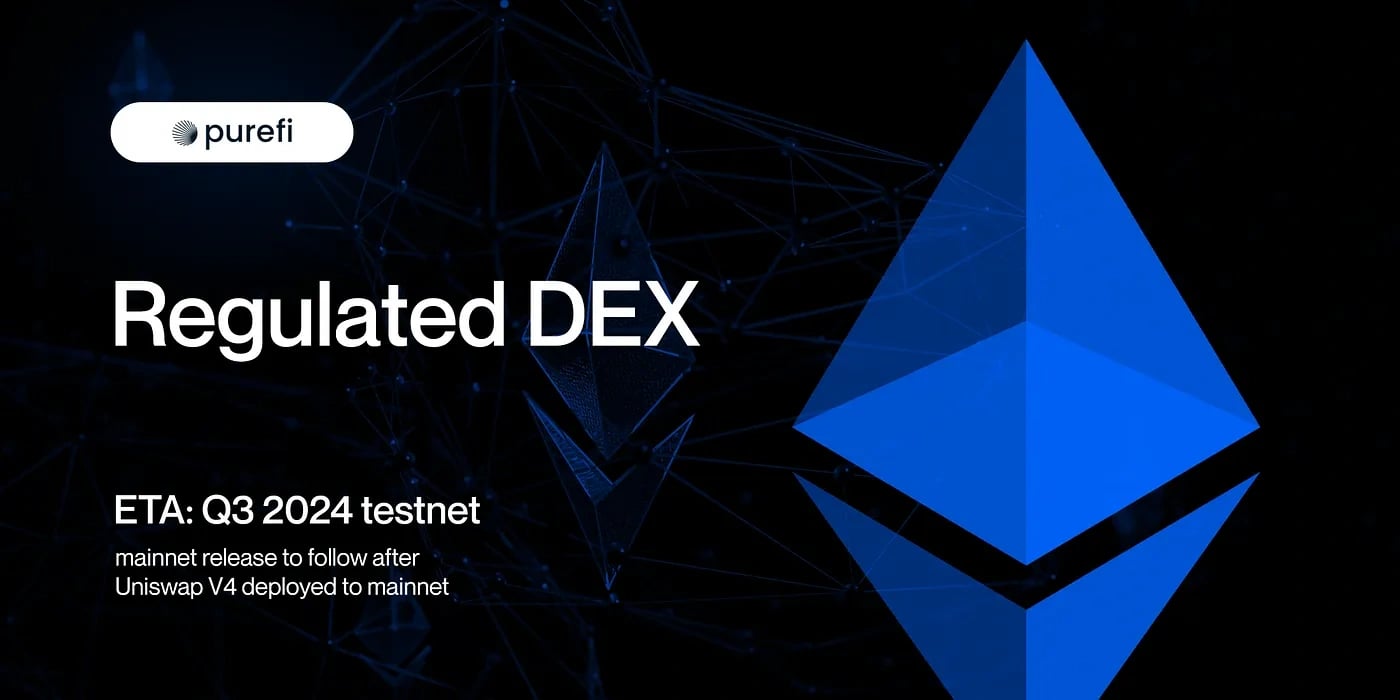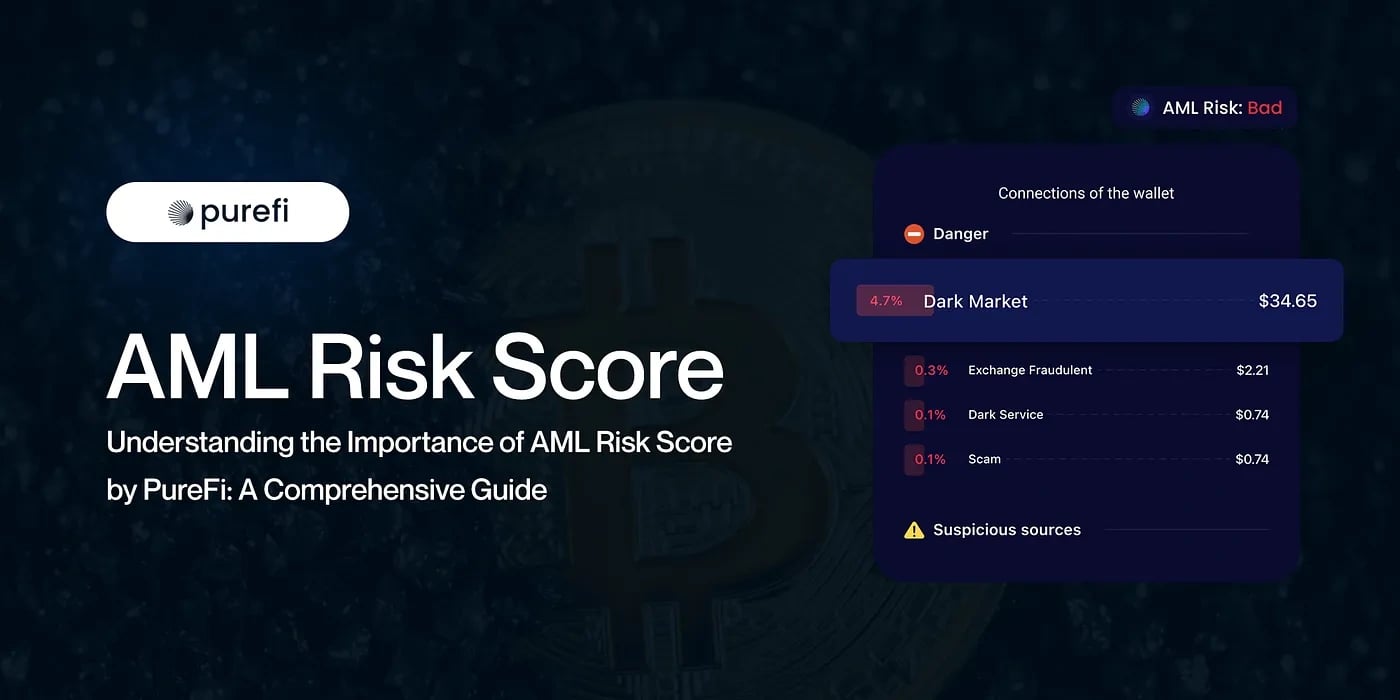Subscribe to wiki
Share wiki
Bookmark
PureFi
The Agent Tokenization Platform (ATP):Build autonomous agents with the Agent Development Kit (ADK)
PureFi
PureFi is a protocol designed to provide decentralized finance (DeFi) platforms with anti-money laundering (AML) and Know Your Customer (KYC) compliance solutions. It enables secure, privacy-preserving verification of crypto assets and user identities through Verifiable Credentials and zero-knowledge proofs. [1]
Overview
PureFi Protocol enables decentralized applications (dApps) to comply with regulatory requirements while maintaining user anonymity. Developed by AMLBot and Hacken Foundation, it offers a comprehensive solution for crypto asset analytics and AML/KYC procedures within the Web3 infrastructure. Rather than relying on a single provider, PureFi creates an open market for verified data providers to offer KYC/AML services. It generates certificates containing information on asset prices, AML/KYC data, and metadata using the Verifiable Credentials standard for secure sharing. PureFi also uses zero-knowledge proofs for on-chain validation without third-party involvement. [2][3]
PureFi Protocol involves three types of users: Liquidity Pool Users, who want to contribute funds to a pool and must prove their assets are clean; Liquidity Pool Operators, who manage pools and seek assurance that no illicit assets are accepted; and Issuers, typically companies that monitor for suspicious crypto activity and act as trusted intermediaries in KYC/AML procedures. The protocol uses PureFi Certificates issued by the Issuers to LP Users' addresses, allowing LP Operators to verify the certificates manually or automatically on-chain. Automated validation enables instant acceptance of funds and issuance of LP tokens. [2][3]
Proof of Humanity
Proof of Humanity (PoH) is a decentralized verification protocol designed to create a reliable system for identifying individuals using blockchain technology. The system operates through registration, verification, and a reputation system. Users register by completing tasks that cannot be automated, such as social interactions. Verification occurs when registered users vouch for the authenticity of new participants. Each user’s reputation is based on endorsements and online activity, influencing trustworthiness and access to protocol benefits. PoH ensures fair distribution of rewards, enhances security by preventing fraud, and operates independently of centralized entities, supporting decentralization. PureFi Protocol integrates PoH to strengthen security and reliability. [4]
Products
Regulated DEX
The PureFi Regulated DEX integrates centralized exchange compliance measures into a decentralized platform, aiming to make decentralized trading more appealing to institutional investors. It addresses evolving regulatory demands while maintaining the transparency and verifiability of decentralized finance, ensuring it remains a compliant and viable option for various market participants. [5][6]

Verifiable Credentials (VCs)
PureFi Protocol addresses DeFi's AML/KYC challenges using Verifiable Credentials, a machine-readable data standard. Verifiable Credentials (VCs) offer a secure, private method for verifying identity through cryptographically signed data from trusted parties, such as KYC information, credit scores, or educational qualifications. Unlike traditional systems, VCs are stored in the user's identity wallet, keeping credentials private and under user control without exposing them on a public ledger. By incorporating zero-knowledge technology, VCs allow users to prove the validity of their credentials without revealing sensitive details, ensuring only necessary information is shared with consent. These credentials have broad applications, from finance to education, providing reliable verifications while prioritizing privacy. PureFi Protocol demonstrates how VCs can enhance security and privacy in digital transactions, illustrating their potential for reshaping digital identity verification. [7][8]
On-Chain KYC
PureFi's On-Chain KYC offers a compliance solution for dApps that enhances credibility by demonstrating adherence to regulatory standards boosting trust among users and regulators. It allows easy integration into dApps, providing a streamlined approach to meet compliance requirements. The blockchain-based whitelist of KYC-approved addresses ensures transparency. It simplifies audits while reducing verification costs by eliminating the need for repeated checks if a user has been previously verified within another application. [5][9][10]
AML Risk Score
The AML Risk Score by PureFi provides a solution for identifying and mitigating risks associated with suspicious funds in cryptocurrency transactions. It helps businesses and individuals avoid legal and reputational damage by analyzing customers' crypto assets for potential connections to illegal activities. The tool offers clear asset verification, detailed wallet activity analytics, and risk-level transparency. Using advanced algorithms to assess wallet history and transaction patterns, PureFi ensures that businesses can make informed decisions, protect their platforms, and build customer trust through enhanced security and compliance. [11][12]

UFI
The PureFi Token (UFI) is an ERC-20 token on the Ethereum and Binance Smart Chain (BSC) networks. It facilitates access to PureFi Protocol services, supports token circulation within the protocol, allows for protocol updates and new oracle integration, and enables crypto asset analytics and identity verification. [10][13]
Tokenomics
UFI has a total supply of 100M and has the following allocation: [14]
- Company Reserve: 23%
- Adoption Incentives: 14.34%
- Public Sale: 11.11%
- Team: 10.55%
- Marketing: 10.5%
- Private Round A: 8%
- Private Round B: 7%
- HAI Pool: 7%
- Advisors: 6%
- Hacken Round: 2%
- Liquidity Pool: 0.5%
Partnerships
- Astra DAO
- Arthera Chain
- DeXe
- Verida
- MistTrack
- VNX
- OneBoard
- Curra
- Marketized
- DeChat
- AVio
- Panther
- Polygon ID
- Plena Finance
- Unreal Finance
- zkSync Era
- Zenfuse
- Bitgert
- Aurora
- Forward Protocol
- Chainlink
- Unstoppable Domains
- NEAR
- CPAD
- Chainalysis
- Zone of Avoidance
- Picipo
- SupraOracles
- Gotbit
- Synaps
- Scaleswap
See something wrong?
The Agent Tokenization Platform (ATP):Build autonomous agents with the Agent Development Kit (ADK)
